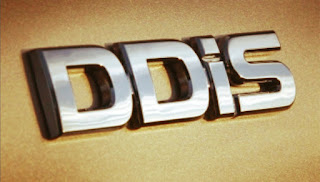It took us million of years to evolve into human beings. The case with IC engines too is not very different, and the frugal yet powerful engines that power our cars today are a result of over several decades of work. The development curves of engines from different manufacturers may have been different, but they tried to modify certain key parameters to bring engines at this stage. VTVT / VVT etc. can be put under one such technology group. In this article, we discuss it in detail.
1.DDIS (Diesel direct injection system) refers to the type of diesel engines for cars . They are equipped with turbochargers, which increase availability of oxygen, resulting in better combustion thus increasing the engine performance.
2.Variable valve timing(VVT) is the process of altering the timing of a valve lift event, and is often used to improve performance, fuel economy or emissions. It is increasingly being used in combination with variable valve lift systems.
It varies the timing of the intake valves by adjusting the relationship between the camshaft drive (belt or chain) and intake camshaft. Engine oil pressure is applied to an actuator to adjust the camshaft position. Adjustments in the overlap time between the exhaust valve closing and intake valve opening result in improved engine efficiency.[1] Variants of the system, including VVTL-i, Dual VVT-i, VVT-iE, VVT-iW and Valvematic
1.DDIS (Diesel direct injection system) refers to the type of diesel engines for cars . They are equipped with turbochargers, which increase availability of oxygen, resulting in better combustion thus increasing the engine performance.
2.Variable valve timing(VVT) is the process of altering the timing of a valve lift event, and is often used to improve performance, fuel economy or emissions. It is increasingly being used in combination with variable valve lift systems.
It varies the timing of the intake valves by adjusting the relationship between the camshaft drive (belt or chain) and intake camshaft. Engine oil pressure is applied to an actuator to adjust the camshaft position. Adjustments in the overlap time between the exhaust valve closing and intake valve opening result in improved engine efficiency.[1] Variants of the system, including VVTL-i, Dual VVT-i, VVT-iE, VVT-iW and Valvematic
3. CRDi stands for Common Rail Direct Injection meaning, direct injection of the fuel into the cylinders of a diesel engine via a single, common line, called the common rail which is connected to all the fuel injectors.
4.Variable Timing Valve Train (VTVT) is a system which has the ability to have independent control of the intake and exhaust valves in an internal combustion engine. In VTVT engine technology the timing of intake and exhaust will be independently programmed in different engine load criteria.
5.TDCi - Turbocharged Diesel Common rail Injection. Means it is a diesel engine which uses a turbocharger and common rail injection system to deliver fuel right into the combustion chamber. It sprays pressurized fuel as per engine loads for better performance and least emissions. Eg. - Ford ( Figo) etc.
6.TDI actually means turbocharged direct injection, In 1996 researchers of fiat Chrysler group have first developed the Common rail direc





Comments
Post a Comment